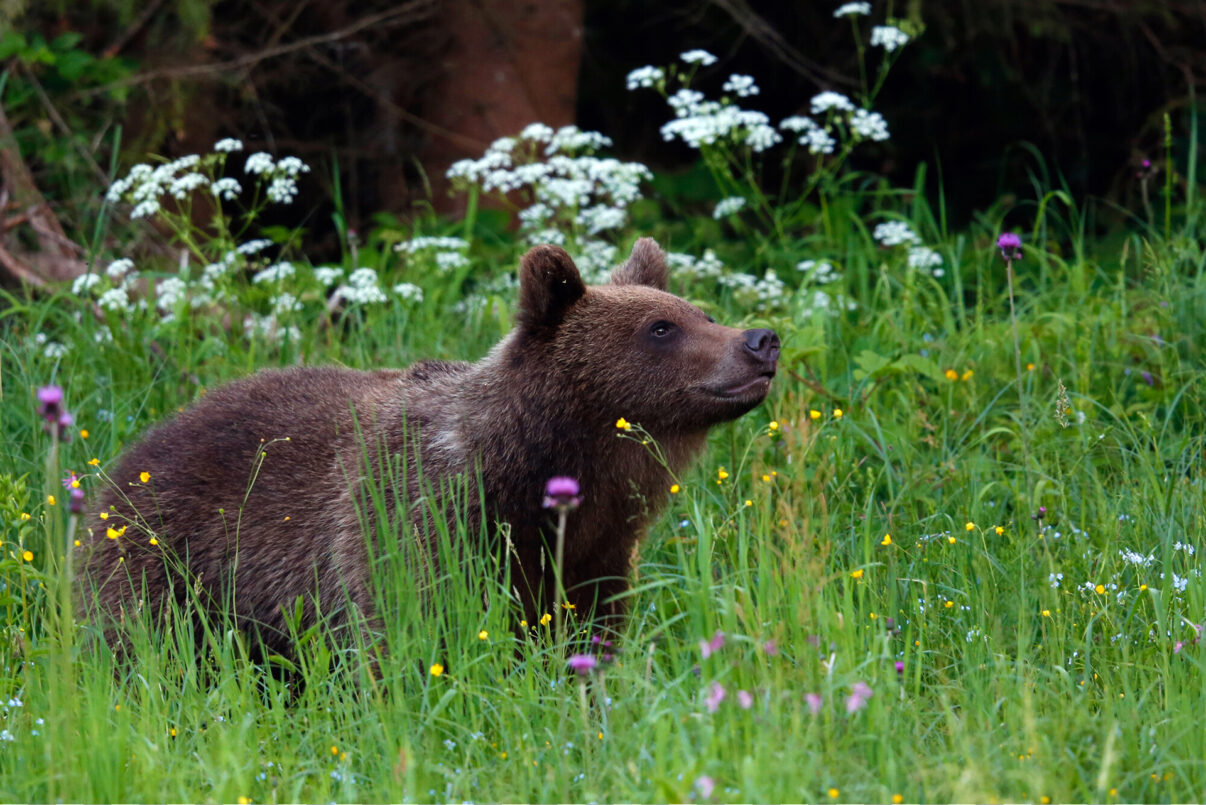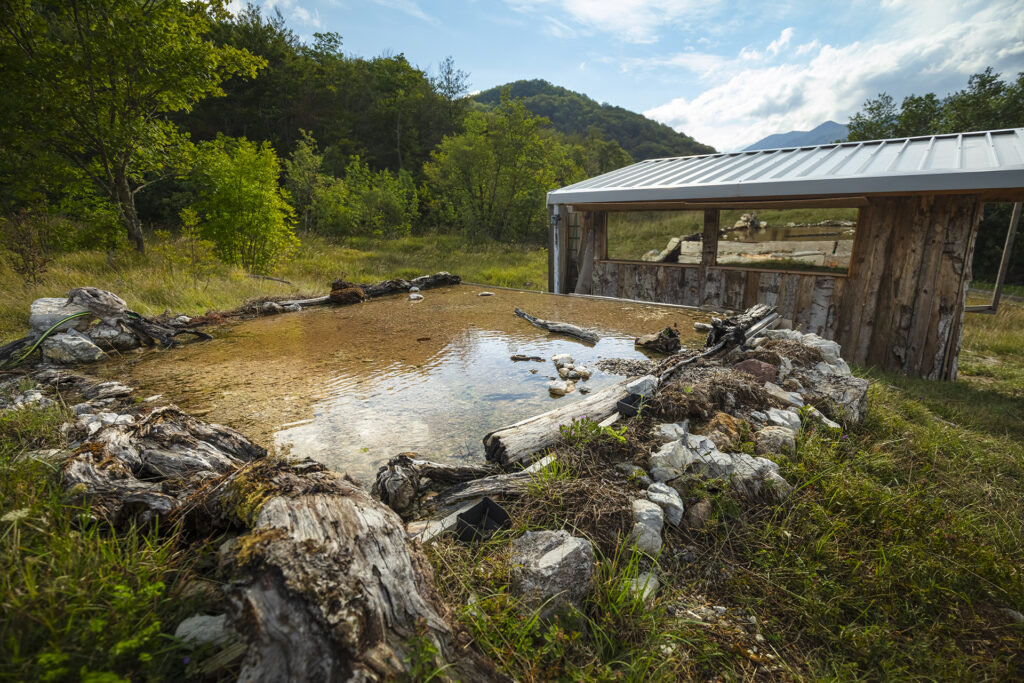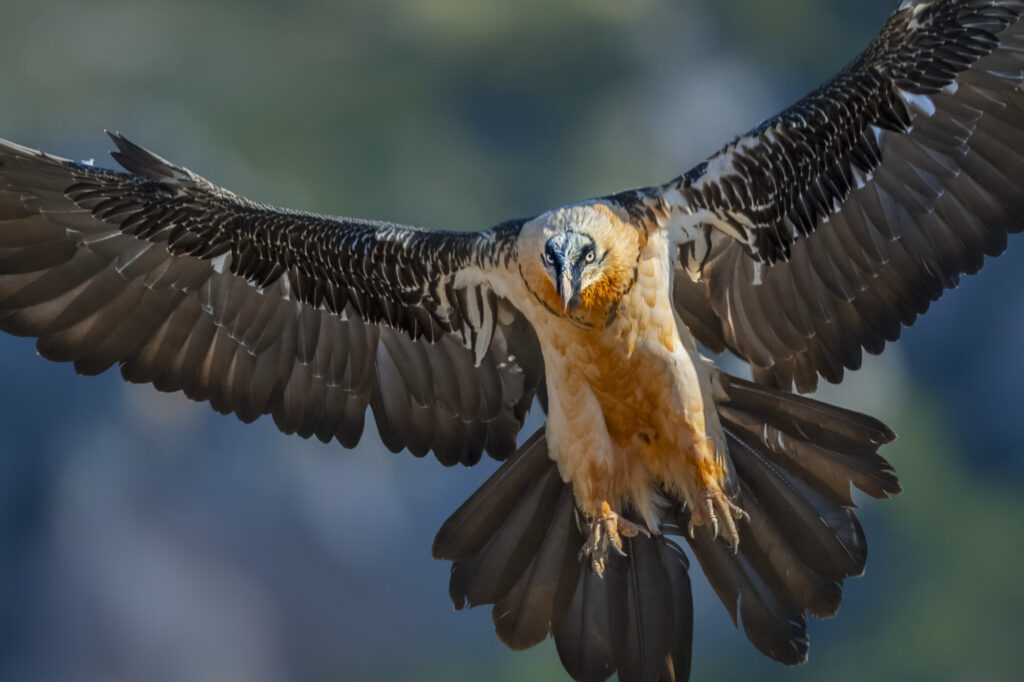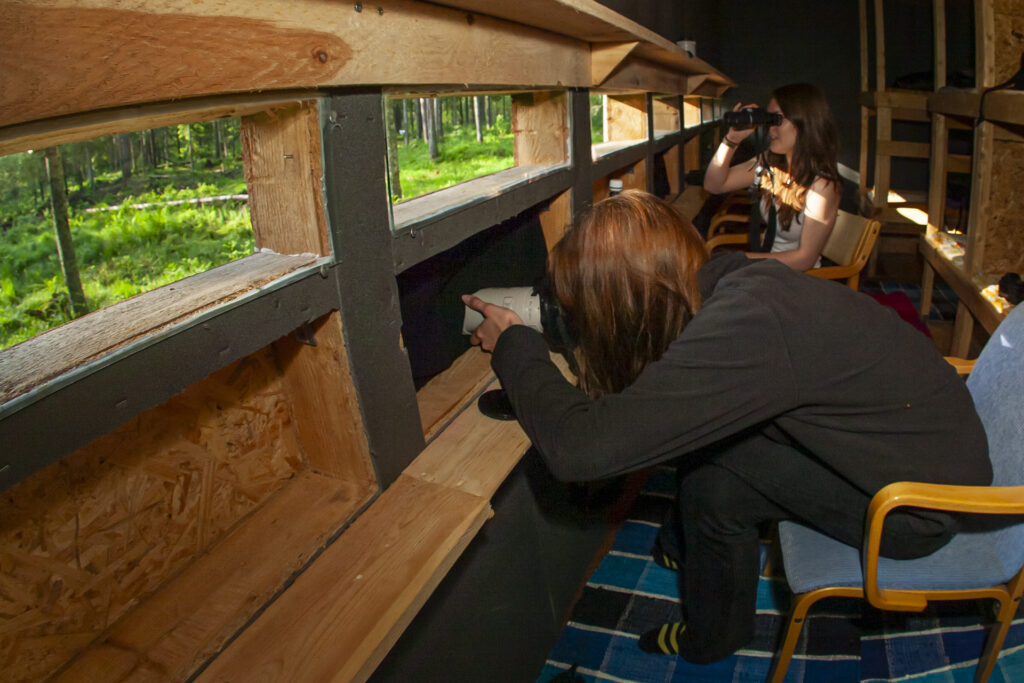Wildlife watching hides can benefit rewilding in many ways. A newly published best practice manual from Rewilding Europe provides guidance for businesses and initiatives that want to develop and operate them.

The benefits of wildlife hides
Today, more and more people want to connect with European wild nature. Europe may not yet have the reputation of Africa as a top wildlife watching destination, but it is home to a wide range of exciting and iconic animals – from bears, bison, and beavers to lynx, wolves, and vultures. As populations of many of these species continue to recover in Europe, opportunities for wildlife watching across the continent are burgeoning.
Commissioned by Rewilding Europe, a Wildlife Comeback Report published in 2022 revealed that many European wildlife species have made a comeback across the continent over the last 40 to 50 years. This recovery is supported by measures including legal protection provided through the EU Birds and Habitats Directives, changes in policy and land use, and species management and conservation efforts, including rewilding.
In Europe, where many wild animals are relatively shy and have low population densities, one of the best ways of facilitating safe and intimate wildlife encounters is to use wildlife watching hides. When they are developed and operated in the right way, such hides can provide valuable income for sustainable nature-based businesses and local communities, strengthen people’s understanding of and passion for nature, and generate further support and economic incentives for conservation and rewilding.

A best practice manual
To outline the benefits of wildlife watching hides, and to provide guidance for businesses and initiatives that want to develop and operate them, Rewilding Europe has developed a Code of Conduct for the development and operations of wildlife hides. This comprehensive manual is intended to complement a well-illustrated practical guide to wildlife watching hides, published by Rewilding Europe in 2014, which provides a range of information on types of hide and their planning and construction.
The new code of conduct includes a range of information and guidelines on wildlife watching hide best practice, relating to factors such as governance, hide location and design, promotion and marketing, and practical, day-to-day operations. It also contains codes of conduct for nature guides and hide keepers, suggested rules for hide users, and an overview of various existing codes of conduct for hides. By following these rules and guidelines, hide operators can ensure that disturbance to wildlife is kept to an absolute minimum, that the experience of the hide user is as rewarding and productive as possible, and that hides generate a healthy financial return.

Velebit: a compelling case study
Wildlife hides can positively impact rewilding initiatives in multiple ways. This is exemplified by our Velebit Mountains rewilding landscape in Croatia, where the efforts of the Rewilding Velebit team are supporting wildlife comeback. The team, who are managing a collection of hunting concessions, are simultaneously transitioning away from traditional hunting operations to wildlife watching.
Five newly constructed hides, which became operational in Velebit in 2023, are now attracting increasing numbers of visitors. In this way, the recovery of nature in and around the landscape is delivering financial benefits to local communities on a growing scale. This, in turn, is enhancing human-wildlife coexistence at a local level by changing people’s perceptions of animal populations – from a potential source of conflict, to one of economic opportunity.
Max Biasioli, general director and founder of leading wildlife watching tourism and hide operator SKUA Nature Group – with which Rewilding Europe has a partnership agreement – is excited about the viewings the new hides are now offering.
“The experience of being able to observe a bear a few metres away, while sitting comfortably in a structure equipped with mirrored glass, is simply incredible. Everyone, not just experienced photographers, is awed by this kind of close encounter. We want local communities to benefit from and be proud of the growing number of tourists drawn to see the wildlife that is thriving here as a result of rewilding and the different approach to management.”

Financial support for wildlife hide development
Those rewilding initiatives and tourism operators seeking support for the development of wildlife watching experiences – including the development and operation of wildlife watching hides – may be interested in contacting Rewilding Europe Capital, Rewilding Europe’s enterprise loan facility.
By providing financial support and expertise, Rewilding Europe Capital works to scale up rewilding impact, grow nature-based economies, and support the development of new business models in and around Rewilding Europe’s growing portfolio of rewilding landscapes that benefit both nature and people. For further information, please contact Rewilding Europe’s Conservation Finance Expert Daniel Veríssimo.
